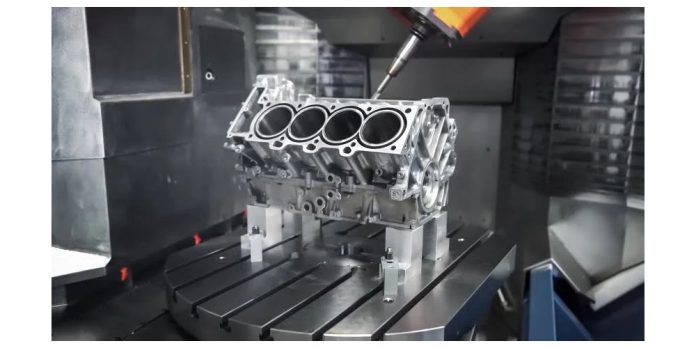CNC milling is one of the standard CNC machining services. It is commonly used for producing complex parts that require a lot of precision and technique. CNC specialists mostly conduct this complex procedure. This post discusses how the CNC milling service works.
A deep dive into the workings of the CNC milling service
As with other CNC machining processes, the CNC milling service starts with the designing stage. The blueprints for the product are created in CAD. This is the hardest part of the process and must be conducted by a professional. Once the blueprints are ready, the CAD file is translated into machining code. The translation aims to ensure that the milling machines understand the programming language.
This is why the CAD file is translated before the machine is programmed. Various CNC software is used for the translation process. The code is usually checked and amended before the next milling process starts.
The next part of the process is setting up the machinery. This includes programming, attaching the tooling components, and feeding the workpiece into the machine. The setup process is the only phase where human input is required in the CNC milling service. From there, the milling process begins.
The CNC milling process
The process depends on the type of milling machine used. In most machines, the workpiece stays stationary as the spindle axis holding the cutting tools rotates. Various cutting tools subtract materials from the workpiece interchangeably. They cut materials on different parts of the workpiece, depending on the blueprints or the instructions from the G-code.
In a nutshell, the cutters advance into the workpiece and not the other way around. The cutting tools also move in different directions, depending on the type of machine. CNC mills either have one or several axes and cutter heads. These components move at different speeds and pressures to allow extra precision and complex production.
CNC milling service is applied in a wide range of industries. It produces a variety of tools with varying diameters and strengths. The process is also used for producing small individual parts, large and heavy-duty products, depending on the area of application. The cutting tools used in CNC milling are strong enough to cut through some of the hardest materials in the market, like Aluminum and Titanium.
Types of CNC milling machines
As CNC milling increases in popularity, more CNC mills are invented. Currently, there are four types of CNC mills. The basic operation of the machines is the same. However, specific elements like the movements of the cutting tools, worktables, and spindle axes differ from one type of machine to the other. Below are some standard types of CNC milling machines
- Bed-type CNC milling machines
- Knee-type CNC milling machines
- Ram-type CNC milling machines
- Planner-type CNC milling machines
There are also vertical and horizontal CNC milling machines.
Conclusion
CNC machining processes like laser and plasma cutting can also deliver the same results as CNC mills. However, laser and plasma cutters are usually expensive, while CNC mills are affordable. This is why CNC mills are the preferred option.














